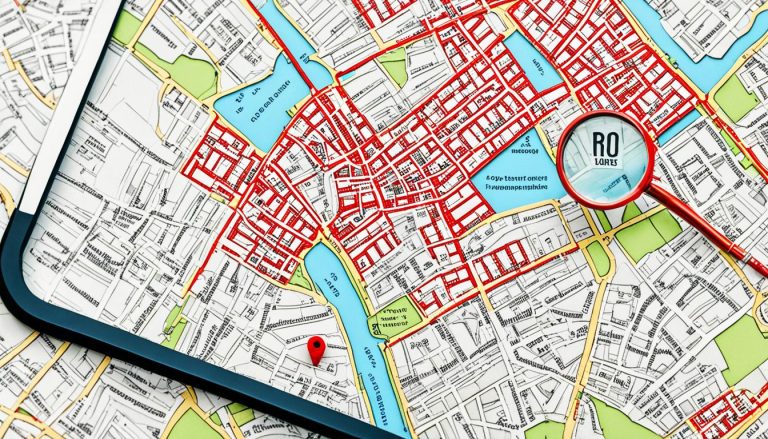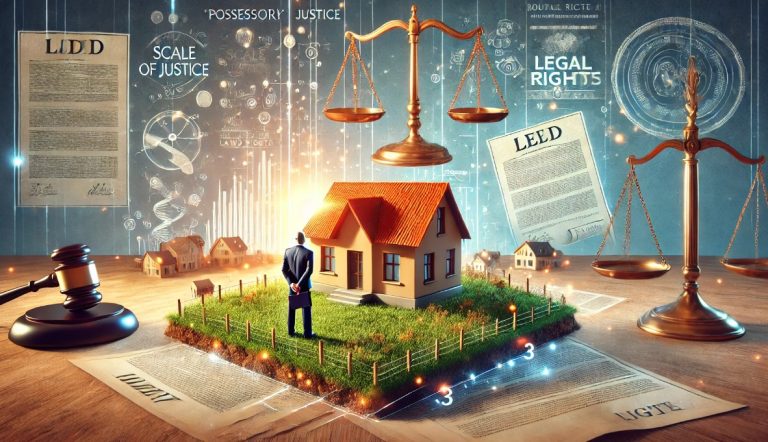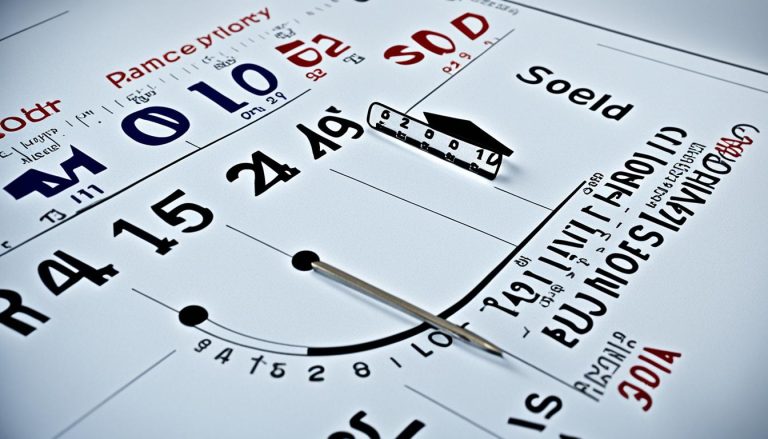Owning a home means you face many responsibilities, including dealing with water leaks. These can be caused by burst pipes, leaking appliances, or a roof that lets rain in. The big question is: does your home insurance cover these issues?
This article will look into how home insurance handles water damage. We’ll cover what types of leaks are usually covered, how your coverage and deductibles work, and the steps to make a claim. By the end, you’ll know how your insurance can help you with water-related problems.
Understanding Water Damage Coverage in Home Insurance
Home insurance covers water damage, but it’s important to know what’s included. Policies vary, so understanding what’s covered is key. Knowing about covered perils, coverage limits, and deductibles helps homeowners manage their policies better.
Types of Water Leaks and Covered Perils
Home insurance usually covers sudden water damage like burst pipes or leaking appliances. These are “covered perils” listed in the policy. But, damage from slow leaks due to neglect might not be covered.
| Type of Water Leak | Covered Perils |
|---|---|
| Burst Pipes | Typically covered |
| Leaking Appliances | Typically covered |
| Roof Leaks | Covered if caused by a sudden, accidental event (e.g., storm damage) |
| Gradual Leaks | Generally not covered |
Factors Affecting Coverage Limits and Deductibles
Many things can change how much you can claim for water damage. These include the leak type, damage size, and property value. It’s crucial to check your policy to see what limits and deductibles apply.
- Type of water leak: Burst pipes may have different coverage limits than a leaking appliance
- Extent of damage: Larger-scale water damage may be subject to higher coverage limits
- Value of affected property: The value of the home and its contents can affect coverage limits
- Deductible amount: The deductible is the portion of the claim that the homeowner must pay before the insurance coverage kicks in
Knowing these factors helps homeowners choose the right insurance coverage. It ensures they’re well-protected against water damage.
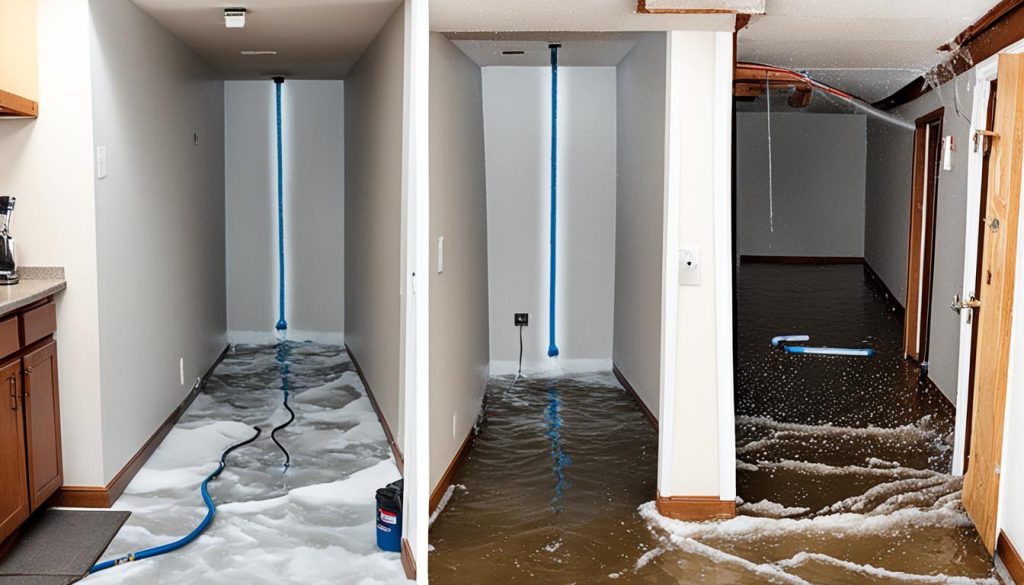
Does Home Insurance Cover Water Leaks?
Many homeowners wonder if their home insurance covers water leaks. This is a key question because water damage can be expensive and disrupt your life. The answer depends on your insurance policy and the type of water leak.
Home insurance usually covers water leaks, but the details vary. It covers sudden and accidental leaks like burst pipes or faulty appliances. If a leak damages your home, your insurance might pay for repairs, up to your policy’s limits.
But, there are exclusions and limits to water damage coverage. Slow leaks from poor upkeep or neglect might not be covered. Also, damage from floods, sewer backups, or other disasters might need extra coverage.
To know what your policy covers, read your insurance documents carefully. Talk to your insurance provider for clear details on what’s covered, limits, and any exclusions.
Understanding your insurance for water leaks helps you prepare for emergencies. It’s smart to be proactive and check your coverage with your insurance provider. This way, you can make sure your home is well protected.
Water Leak Claims and the Claim Process
Understanding how to handle home insurance claims for water leaks is key. Homeowners need to be ready to provide detailed documents and evidence. Insurers look closely at these claims.
Documentation and Evidence Requirements
To make a successful claim for water damage, homeowners should collect the following:
- A detailed account of the water leak, including when, where, and how it happened
- Photos and/or videos showing the damage
- Receipts for any emergency repairs or actions taken to stop more damage
- A plumber’s report or invoice explaining the leak’s cause and type
- Quotes from licensed contractors for repair and restoration costs
- A list of damaged or destroyed items, with photos and proof of purchase
Homeowners should also be ready to work with the insurer’s investigation. This might mean an adjuster coming to see the damage. Giving clear and full documentation can make the claim process easier and might lead to a better outcome.
| Documentation Requirement | Purpose |
|---|---|
| Detailed incident report | Shows when and how the water leak happened |
| Photographic/video evidence | Shows how much damage there was |
| Repair and restoration invoices | Helps prove the cost of fixing the damage and making things right |
| Plumber’s report | Finds out why and what kind of water leak it was |
| Contractor estimates | Gives a clear cost breakdown for the needed repairs |
| Damaged property inventory | Helps with claims for replacing or getting back personal items |
By getting all the needed documents and evidence, homeowners can make stronger claims for water damage. Knowing the claim process and what the insurer wants can make things go smoothly and help get a good result.
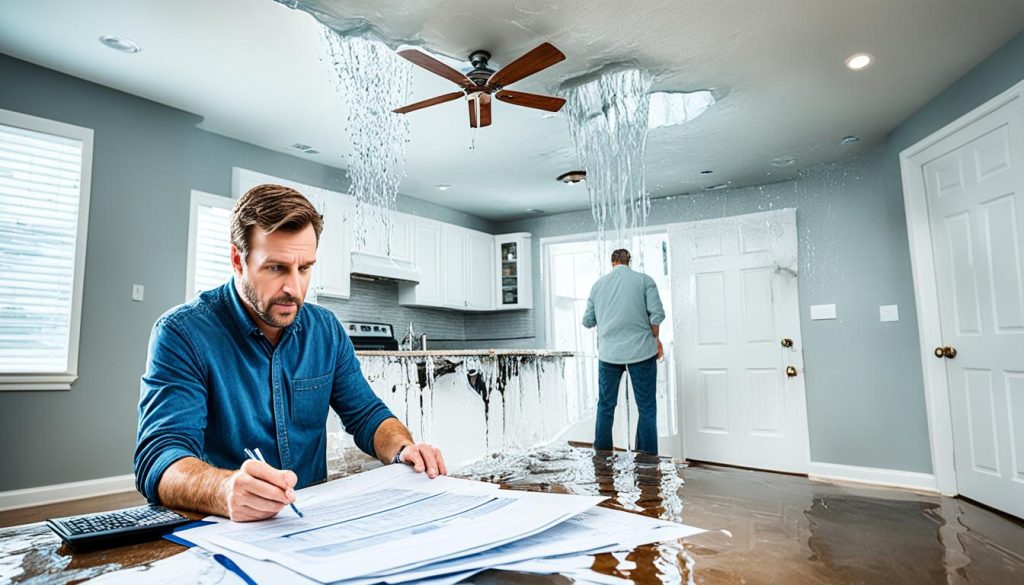
Burst Pipes and Plumbing Leak Coverage
Home insurance is key when it comes to protecting against burst pipes and plumbing leaks. These issues can be costly and disruptive. It’s vital to know what your policy covers.
Most home insurance policies in the UK cover repairs and damages from burst pipes or leaks. This is under the “water damage” or “accidental water discharge” section of the policy.
But, the details can change. The cause of the burst pipe or leak, where it happened in the home, and the damage it caused can affect your claim. They can also change how much you get back.
Covered Scenarios and Limitations
Insurance usually covers burst pipes and leaks from sudden events like:
- Freezing temperatures causing pipes to burst
- Accidental punctures or cracks in plumbing systems
- Malfunctioning appliances or fixtures leading to leaks
But, there are limits or exclusions if the damage is from poor upkeep, not enough insulation, or wear and tear. Always check your policy’s terms to know what’s not covered.
Claim Process and Documentation
When you need to claim for a burst pipe or leak, follow these steps:
- Tell your insurance company right away
- Collect proof like photos and bills to back your claim
- Get quotes or assessments from licensed plumbers
- Work with the insurance company’s claim process
Knowing about coverage, limits, and how to claim for burst pipes and leaks helps homeowners. It makes sure they’re well-protected and can handle the claims process well.
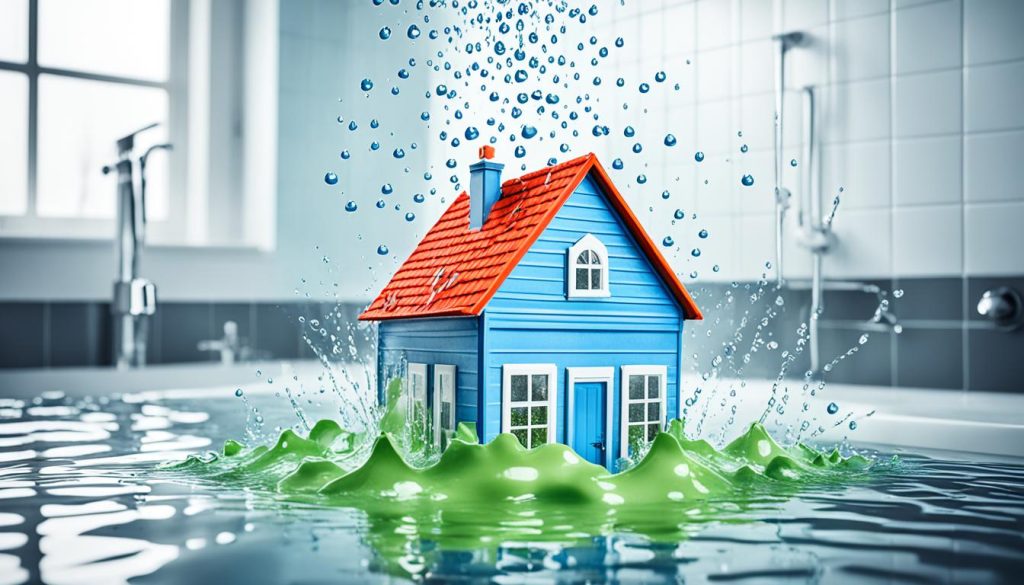
| Covered Scenarios | Excluded Scenarios |
|---|---|
|
|
Leaking Appliances and Accidental Water Spills
Home insurance often covers leaking appliances and accidental water spills. Homeowners might wonder if their policy will help with the costs of these incidents.
Leaking appliances like washing machines, dishwashers, or refrigerators can cause water damage. Whether your policy covers these leaks depends on your insurance details. You’ll need to show the leak was sudden and accidental, not due to neglect.
Accidental water spills, like an overflowing sink or bathtub, are also a concern. Your insurance might cover these incidents, but it depends on your policy. You might need to provide photos or repair bills to back up your claim.
It’s key for homeowners to check their insurance policies closely. They should know how leaking appliances and spills are covered. Some policies might not cover everything or might ask for you to take steps to prevent damage. Knowing your policy helps you be ready for water-related issues.
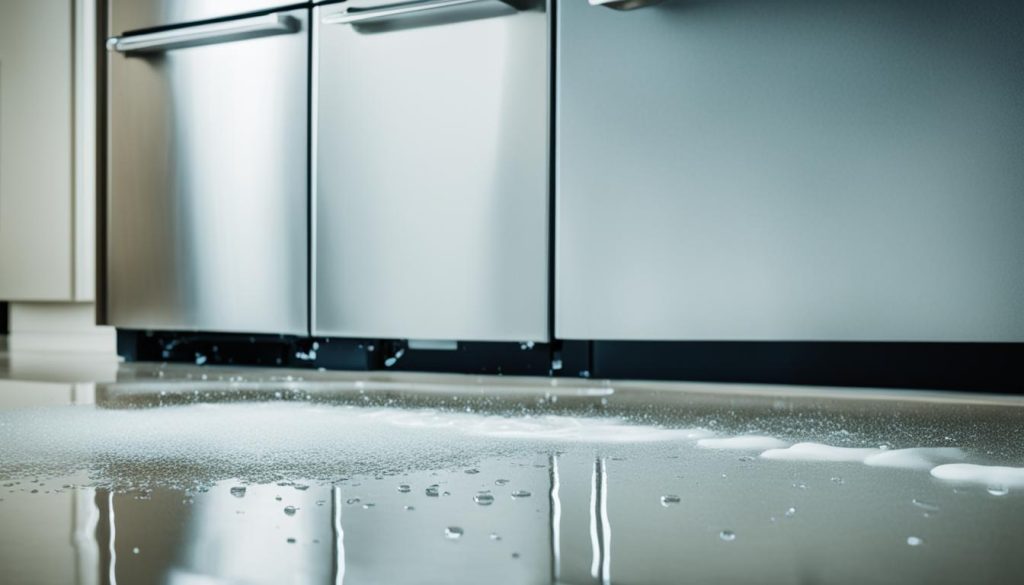
The coverage for leaking appliances and spills varies a lot. Homeowners should get to know their insurance well. By understanding what’s covered and preventing water damage, they can avoid the cost of unexpected water issues.
Leaking Roof and Weather-Related Water Damage
Home insurance can be tricky, especially with water damage from leaking roofs and weather. Not all water damage is covered by standard policies. It’s important to know what’s not included to protect your home.
Exclusions and Limitations Related to Roof Leaks
Home insurance usually covers sudden water damage like burst pipes. But, it might not cover leaks from a failing roof. If your roof leaks because it’s old or you didn’t maintain it, your insurance might not help.
Insurance also has rules for weather-related water damage. For example, it might not cover flooding or damage from heavy rain. You might need extra insurance for these risks.
| Coverage Type | Typical Inclusions | Typical Exclusions |
|---|---|---|
| Leaking Roof Coverage |
|
|
| Weather-Related Water Damage |
|
|
It’s crucial to check your insurance policy well. Know what’s covered and what’s not, especially about leaking roofs and weather damage. This helps you make smart choices and keep your home safe.
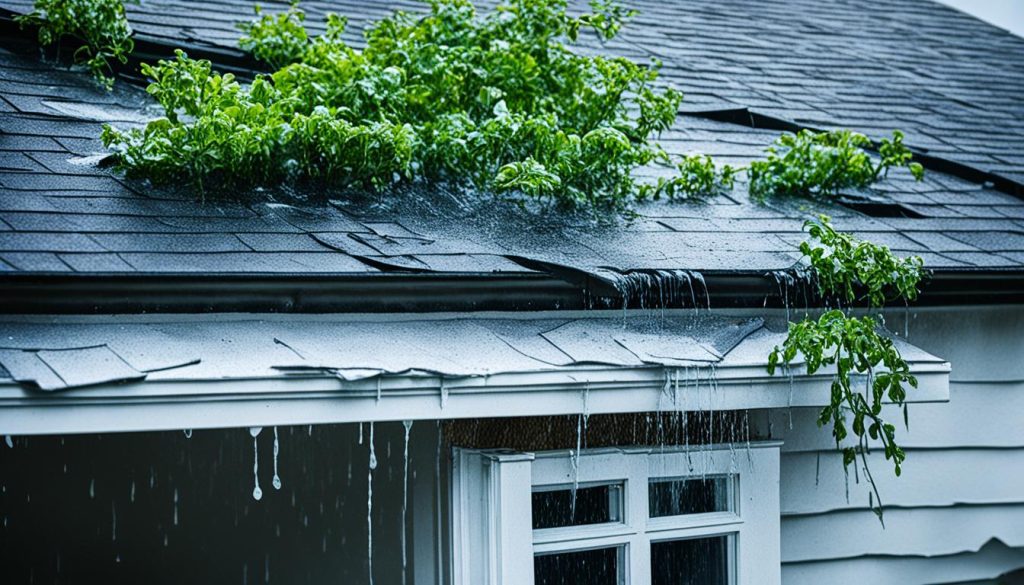
Water Backup Coverage and Sump Pump Failure
Many homeowners don’t see the need for water backup coverage. This is a big mistake. It’s a key way to protect against the damage from sump pump failure or sewer line backups. These problems can cause a lot of water damage, leading to expensive repairs and mould growth.
Protecting Your Home from Water Backup Incidents
It’s vital to know how water backup coverage works in home insurance. This type of coverage helps pay for the damage from sewer or sump pump backups. These backups can happen a lot, especially when it rains a lot or during extreme weather.
This coverage can pay for drying out your home, fixing structural damage, and replacing items that got ruined. It might also cover the cost of finding a new place to live if your home is too damaged.
Homeowners can also lower the chance of sump pump failure and water backups. Make sure to check and maintain your sump pump often. Also, have a backup power source ready. Keeping your gutters and downspouts clear helps keep water away from your foundation.
Understanding water backup coverage and being proactive can save your home and money from sewer and sump pump failures. It’s a way to protect your biggest investment.
| Coverage | Description |
|---|---|
| Water Backup Coverage | Provides financial protection against water damage caused by sewer or sump pump backups |
| Sump Pump Failure | Covers the costs of repairing or replacing a failed sump pump, as well as any resulting water damage |
| Temporary Relocation | May cover the expenses of temporarily relocating if your home becomes uninhabitable due to water damage |
Conclusion
Understanding what home insurance covers for water leaks and damage is key for homeowners. This article has looked at the different types of leaks and how they affect coverage. It also covered how to claim for these issues.
Home insurance can cover burst pipes, leaking appliances, or roof leaks from the weather. But, it’s important to check the policy details carefully. Homeowners should know about exclusions and limits, like those for plumbing upkeep or gradual damage.
Regular checks for water leaks and fixing them quickly can prevent big claims. It also keeps the home safe. By knowing about water leak coverage and being proactive, homeowners can protect their homes and finances.
FAQ
What types of water leaks are typically covered by home insurance?
Most policies cover sudden leaks from burst pipes, leaking appliances, or roofs. But, leaks from poor plumbing or a slow roof leak might not be covered.
How do coverage limits and deductibles affect water leak claims?
Coverage limits and deductibles can change how much you get paid for water leak claims. Higher limits mean more protection, but a higher deductible means you pay more first. Think about these when picking a policy.
What documentation is required for a water leak insurance claim?
For a water leak claim, you’ll need to show receipts for repairs, photos of damage, and repair estimates. Insurers might ask for a plumber’s report on the leak’s cause. Good documentation helps with the claim process.
Does home insurance cover burst pipes?
Yes, many policies cover water damage from burst pipes if they weren’t neglected. You’ll need to prove the pipe burst suddenly and accidentally to get coverage.
Are leaking appliances covered by home insurance?
Policies often cover water damage from leaking appliances like washing machines or dishwashers. But, coverage can be limited by policy details and exclusions for gradual leaks or lack of upkeep.
What is water backup coverage, and does it protect against sump pump failure?
Water backup coverage is an extra option that protects against sewer or sump pump backups. It covers cleanup and repairs if your sump pump fails or backs up. Check your policy to see if you have this coverage or can add it.

